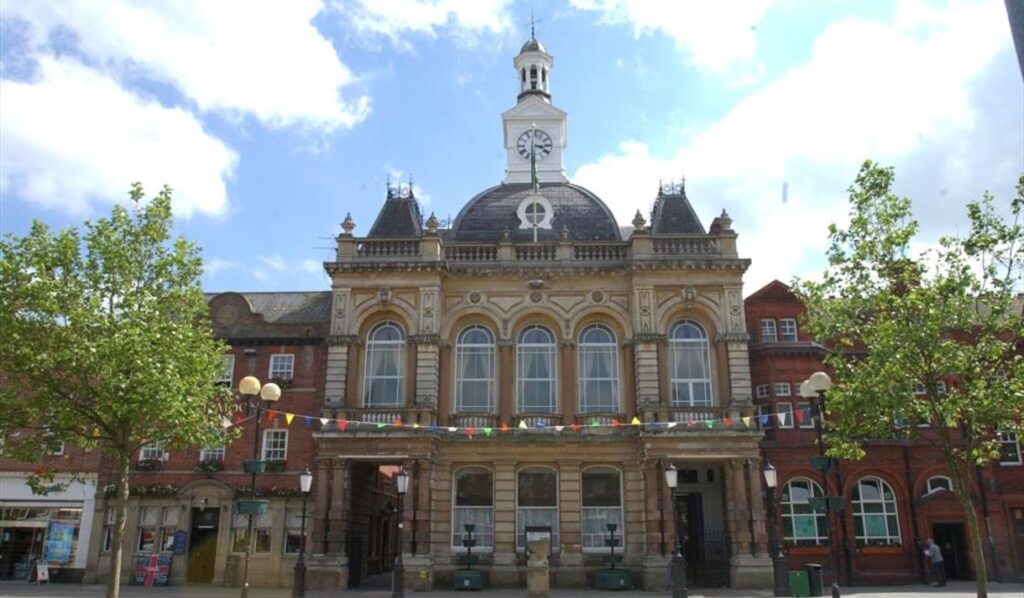Retford is an interesting place with loads of history and modern day interests. We’ve compiled a list of 10 interesting facts about Retford.

1. The town was originally called Redforde because of the red colour of the soil
The origins of the town’s name are unknown and have been subject to much debate, but consensus seems to conclude that it gets its name from an ancient ford crossing the River Idle. There is considerable variation in how its name has been spelt historically, although in early usage it is usually styled as Redeforde or Redforde. A common explanation of the name is that the river water was tinged red due to the frequent crossing of people and livestock disturbing the clay river bed. Other traditions include that it refers to the reeds that are plentiful in the river, or that the name references the Battle of the River Idle which was said to tinge the Idle red with blood.
2. Retford has a population of around 30,000-40,000
At the turn of the 20th century, Retford had a population of around 12,000 people. 20 years after World World 2, Retford’s population had grown to around 17,000 and then when a census was conducted in 2001 the population had risen to 22,000 with most of the population living in Ordsall, Hallcroft and Spital Hill. Over the 20 years since then, major housing developments have been built and Retford’s population is constantly growing.
3. Retford is twinned with 3 towns across the World
Retford and Bassetlaw have twinning associations with 3 different towns from 2 different continents. The towns of Aurillac in France and Pfungstadt in Germany are twinned with Retford, along with Farmers Branch in Texas, USA.
4. Retford is a town steeped in history
Evidence of early human activity around Retford stretches back to the Mesolithic period, with archaeological evidence of human activity in the area including a Mesolithic flint tool found in Ordsall, an axe from the Neolithic era (New Stone Age) from Little Morton and a Neolithic polished flint axe discovered near the River Idle at Tiln. A Bronze Age spearhead was found near Whinney Moor Lane and Romano-British crop marks are visible around Babworth.
5. The Domesday Book has mentions of Retford
Retford is one of the oldest boroughs in England and was mentioned in the Domesday Book of 1086 as ‘Redeforde’. Henry I established the borough in 1105, and it gained a Royal Charter in 1246, when Henry III granted the right to a fair. This was later extended to holding a Saturday Market by Edward I in 1275. The granting of Royal Charters was important because it enabled Retford to self-govern and become independent of interference from the Sheriff of Nottingham.
6. The earliest surviving charter of Retford was granted in 1313
Retford was granted a total of 17 Royal Charters (including the Letters Patent of 1225 that granted it the right to levy tolls on travellers in North Nottinghamshire) up to 1607. There is some controversy over when it was granted its first charter with Piercy (1828) suggesting it was granted in 1246 by King Henry III, which allowed an 8-day annual fair to be held. However, Ballard & Tait (1923) and Dolby (1997) say that there is no existing historical evidence to support this, making the 1259 charter the earliest known to be granted. The 1313 charter has survived and is now held in the Bassetlaw Museum.
7. In 1914, King George V visited Retford
Weeks before the outbreak of World War I, the Retford Times reported that “the town really turned on the charm” when King George V visited Retford in 1914. This is said to have included a large pavilion in the market square that was decorated with flowers, three different renderings of the National Anthem plus dancing and fireworks.
8. The official name of the town is East Retford, but nobody actually calls the town this
The official name of the town is still East Retford, although this refers only to the historically larger of the two settlements on either side of the Idle. The inhabitants of the town and the people in the surrounding area traditionally refer to the town simply as ‘Retford’.
9. Retford is home to the Bassetlaw Museum
Retford is home to the Bassetlaw Museum, which was created in 1983 and has a number of collections donated by people in the local area. The museum tells the history of North Nottinghamshire from its earliest people to the present day. Collection highlights include: Carlton-in-Lindrick knight, Anglo-Saxon boat and autochromes by Stephen Pegler. It was voted the Nottinghamshire Museum of the Year in 2009, following extensive renovation, and is based in the Grade II* listed Amcott House. The museum also houses collections about the Mayflower Pilgrims who descended from the area.
10. The town hosts the annual Retford Charter Day
To celebrate the granting of Retford’s Royal Charter in 1246, the town holds a celebration known as Charter Day on the first Bank Holiday in May. The event celebrated its 25th Anniversary in 2018 and now enjoys tens of thousands of visitors who take part in the many events held around the town. These include musical performances, vintage car rallies, street entertainers, dance performances, dog displays, food stalls, workshops, demonstrations and a charity market. Retford Fire Station perform ‘rescues’ to demonstrate their job to the public. One of the most popular events is the annual Lions’ Duck Race, where locals and visitors sponsor a yellow plastic duck which is then ‘raced’ between two bridges on the river Idle. The money raised is donated to charity.
